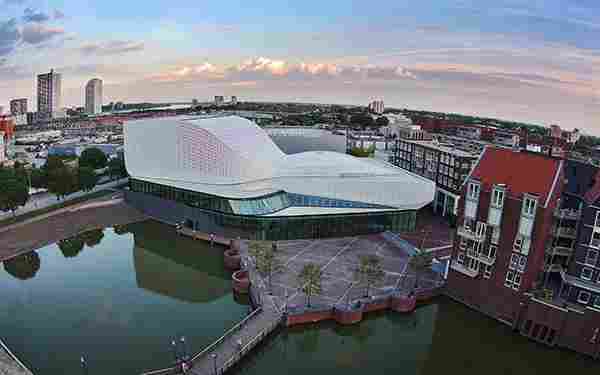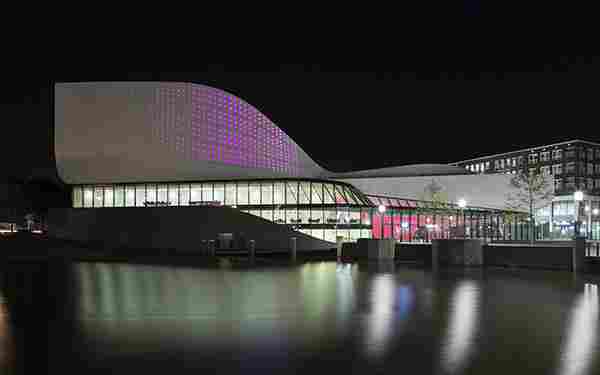Emergent’s new Huaxi Urban Center for China (always China or Dubai) is a paradigm shift in architectural design when once upon a time a building’s exterior was designed to hide, shield, and mask its massive network of support beams, duct work, wiring, and HIVAC systems. The Huaxi Urban Center externalizes all its “innards” in a morphology of shifting lights racing up and down its glacial-like hull. With advances in flexible cellular based materials, exoskeletal lattices, and carbon fiber composites; only now is a building like the Huaxi Urban Center possible. Gorgeous!
via: Archinect
Designer: Emergent
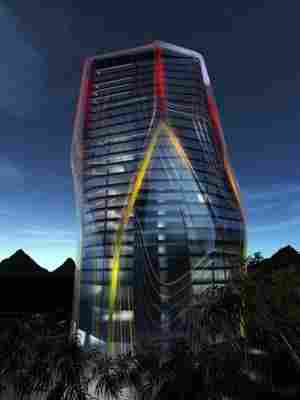
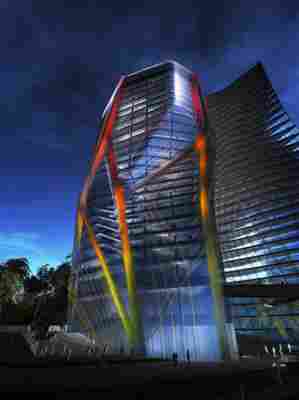
Musical Stairs
Leander Angerer and David Ross’ revamp of this late Victorian staircase introduces subtle modern touches to accentuate the classical style. Tennis racket string sewn into the handrail replaces the banisters while a floating marble plinth replaces the first step. Other extraneous parts were taken away and hand-modified to give it a lighter, renewed aesthetic. Not only nice to look at, the strings can also be plucked, turning the house itself into a giant musical instrument!
Designers: David Ross & Leander Angerer
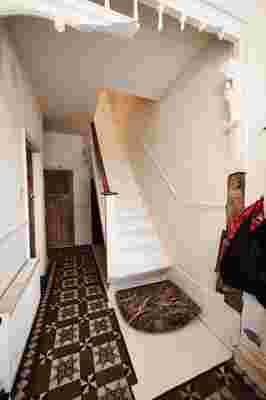
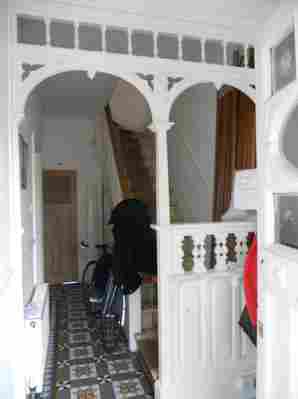
Other-worldly Theater Now a Reality
UNStudio’s completed design for the Theatre de Stoep in the Dutch town of Spijkenisse responds to the current cultural invigoration of the city by merging the archetypical function of a theatre- that of creating a world of illusion and enchantment – with the specific requirements to cater to the needs of the local community. The resulting venue is designed to fortify and inspire the magic of live theatre, providing at once a place of performance, a social gathering and experience of contrasting realities.
In the design of the 5,800 m2 building, a larger and smaller theatrical space (seating 650 and 200 guests respectively), several interlinked foyers, a grand cafe and restaurant, an artist’s cafe, a VIP lounge, numerous dressing rooms, multifunctional rooms and offices are all brought together within one volume. The placement of the various elements results in a building in the form of a flower, with a large, column-free foyer forming the heart of the structure.
Furthermore, the foyer serves to organize way finding and the linking of the different programs within the building. From the main foyer, a sculptural stairway forms the binding element toward the entrances to the auditoriums, while the handrail of the stairway seamlessly molds itself into functional surfaces and furniture elements.
The theater will play host to a wide variety of performance types, including plays, opera, cabaret, musicals, concerts, and dance performances. As such, versatility in the acoustic properties of the theater space are paramount. The recent rapid development of software used to control acoustics made it possible to engineer and optimize the sound quality within the space. Thus, the ceiling elements can be lowered and angled to adjust volume levels when required, while the acoustic wall panels reflect and increase the quality of the sound for every seat in the auditorium.
Designer: UNStudio
